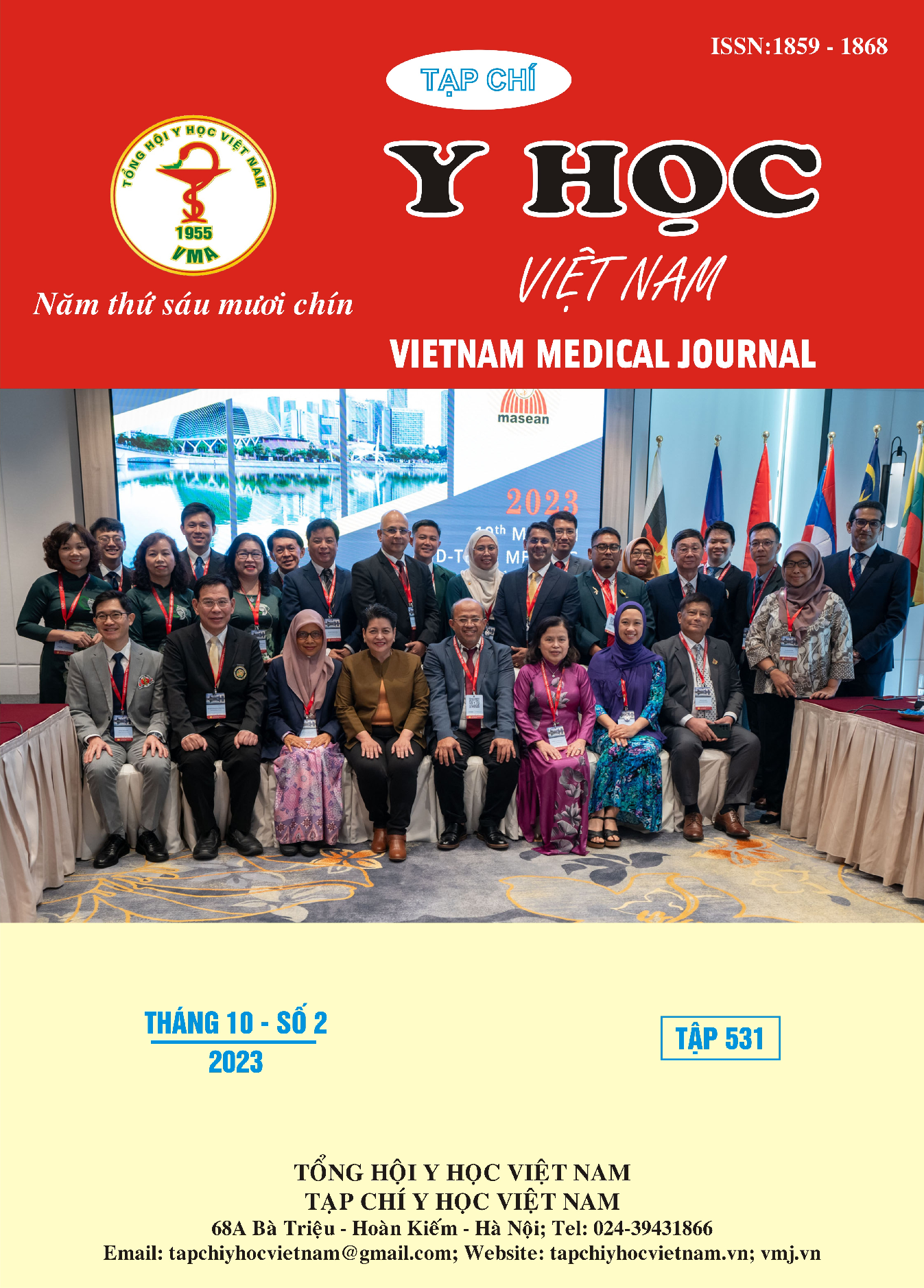ASSOCIATED FACTORS OF THE TRADITIONAL MEDICINE PATTERN OF HYPERTENSION IN OLDER ADULTS AT THE NATIONAL HOSPITAL OF TRADITIONAL MEDICINE
Main Article Content
Abstract
Objective: Analysis of associated factors for the Traditional medicine pattern of Hypertension in older adults at the National hospital of Traditional medicine. Subjects and methods: A cross-sectional descriptive study was conducted from December 2022 to June 2023 among 105 hypertensive patients at Internal Medicine Department, Gerontology Department, Acupuncture Department of the National hospital of Traditional medicine. Results: The prevalences of traditional medicine syndrome were liver-kidney yin deficiency syndrome (56,2%), Phlegm-dampness syndrome (24,8%), ascendant hyperactivity of liver yang (14,3%), Yin and Yang deficiency syndrome (4,8%). Patients with a history of stroke have a higher risk of ascendant hyperactivity of liver yang with hypertension than those without stroke with OR= 4,20, KTC 95%: 1,05 – 16,78, p=0,04. Low-weight patients have a higher risk of liver-kidney yin deficiency syndrome with hypertension than normal BMI patients (OR= 3,52, 95% CI: 1,02 – 12,12, p=0,046). Patients with a history of dyslipidemia have a higher risk of with hypertension than without stroke patients (OR= 2,05, KTC 95%: 1,15 – 3,67, p=0,02). Overweight and obese patients have a higher risk of dyslipidemia have a higher risk of Phlegm-dampness syndrome with hypertension than normal people (OR= 3,05, KTC 95%: 1,12– 8,26, p=0,029).
Article Details
Keywords
hypertension, the traditional medicine pattern.
References
2. Wenger N.K., Arnold A., Bairey Merz C.N. và cộng sự.(2018).Hypertension Across a Woman’s Life Cycle. J Am Coll Cardiol, 71(16), 1797–1813.
3. Nguyễn Thiên Quyến (2010). Chẩn đoán phân biệt chứng hậu trong Đông y. Nhà xuất bản văn hóa dân tộc, Hà Nội, 201–204, 313–322, 520–527.
4. Tô Hùng Vinh (2023), Đặc điểm thể chất y học cổ truyền và thực trạng hút thuốc lá của người dân tại phường 5 quận 10, thành phồ Hồ Chí Minh, Luận văn Thạc sĩ Y học, Học viện Y Dược học cổ truyền Việt Nam, Hà Nội.
5. 高飞, 王国玮, 李健 và cộng sự. (2010). 健康体检人群体重指数与中医偏颇体质的相关性研究. 世界中西医结合杂志, 5(2), 126–129.
6. Cao Phi, Vương Quốc Vĩ, Lí Kiện và cộng sự. (2010). Nghiên cứu mối tương quan giữa chỉ số khối cơ thể và thể chất y học cổ truyền ở người khỏe mạnh. Tạp chí kết hợp Đông Tây y thế giới, 5(2), 126–129.
7. 王智玉 (2012). 浅析高脂血症与中医体质的相关性. 世界中西医结合杂志, 7(7), 604–606.
8. Vương Tri Ngọc (2012). Phân tích mối tương quan giữa rối loạn lipid máu và thể chất y học cổ truyền. Tạp chí kết hợp Đông Tây y thế giới, 7(7), 604–606.
9. 韩燕, 杨月嫦, 周扬 và cộng sự. (2022). 超重/肥胖与中医体质相关性的横断面研究. 上海中医药杂志, 56(10), 24–28.
10. Hàn Yên, Dương Nguyệt Thường, Châu Dương và cộng sự. (2022). Nghiên cứu cắt ngang về mối tương quan giữa thừa cân/béo phì và thể chất Y học cổ truyền. Tạp chí Trung y dược Thượng Hải, 56(10), 24–28.


